#70's exploitation
Explore tagged Tumblr posts
Text
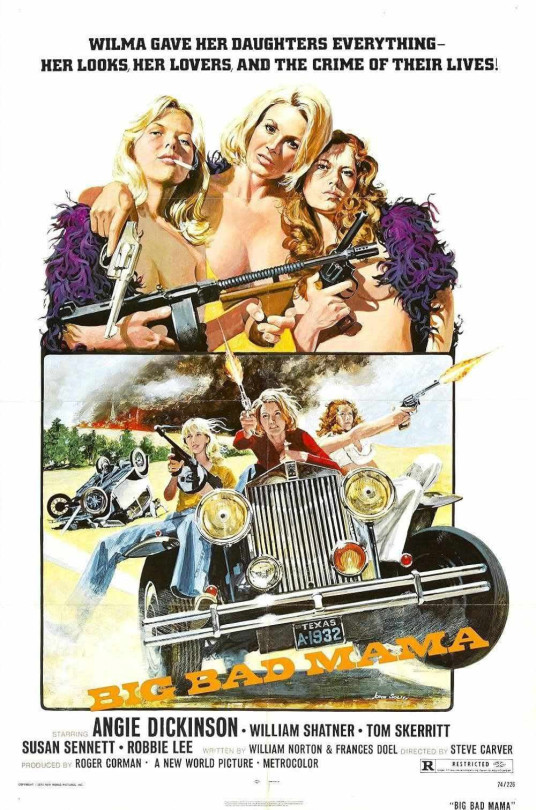
Big Bad Mama (1974)
#movies#posters#roger corman#70's exploitation#angie dickinson#william shatner#tom skerritt#big bad mama#steve carver
21 notes
·
View notes
Text
Well she is. 21 babies in just over a year to be exact.
Kristina has authored a book titled Baby's Diary. News18Join our Whatsapp channel
The feeling of motherhood is a special one and many experience it multiple times, choosing to have more than one child. Kristina Ozturk, the wife of a wealthy Turkish individual, stands out in this regard. Despite being only 26 years old, she has already become the mother of 22 children via surrogacy. Originally from Russia, Kristina, along with her millionaire businessman husband, 57-year old Galip, welcomed 21 surrogate babies into their lives between March 2020 and July 2021. Despite this remarkable number, Kristina expresses her desire for even more children.
Kristina’s eldest child, an eight-year-old daughter named Victoria, was born naturally from a previous relationship. Despite facing criticism for what some perceive as “buying babies,” this mother from Georgia remains steadfast in her decision to expand her family. Kristina has openly expressed her ambition to have even more children, aiming to reach a three-digit figure.
Her plans face challenges as her Turkish businessman husband was imprisoned in 2023 on charges of money laundering and document falsification. Fortunately, Kristina is supported by a team of 16 live-in nannies to assist her while her husband serves an eight-year sentence behind bars.
Kristina first met Galip in a club in Moscow, Russia and started a relationship in spite of the 31 year age difference between them. They started living in a lavish three-story mansion in Batumi, Georgia. In February last year, Kristina had paid Rs 1 crore 43 lakh to the surrogates.
Kristina has also authored a book titled Baby’s Diary, in which she shares her journey as a mother of so many children. She reflects that while much has been written about parenting, every day parents seek valuable insights from her to provide the best for their children.
Kristina’s unconventional path in parenting hasn’t been without challenges. She revealed an incident where one of the surrogate mothers expressed a desire to keep a baby after giving birth. As the baby’s genetic makeup consisted of Kristina and her husband’s DNA, the child rightfully belonged to them.
Although Kristina has openly discussed her aspiration for at least 105 children, she now intends to hold off on further steps toward that goal until her existing children are older. While she hasn’t dismissed the possibility of becoming pregnant herself again, she acknowledges the impracticality of doing so with a household full of young children.
#Kristina Ozturk#Babies are not commodities#Babies are not collectibles#Surrogacy exploits women#Her much oolder husband is in jail and she wants to have even more kids?#How they hell is she going to take care of over 22 kids so close in age if he loses their money or they money is used up in legal fees?#What is Rs 1 crore 43 lakh in USD?#One of her surrogates tried to keep the baby#She has no plans to get pregnant while she has 20 toddlers and a husband in jail#This dude is going to be in his early 70's when his over 20 kids turn 18
59 notes
·
View notes
Text
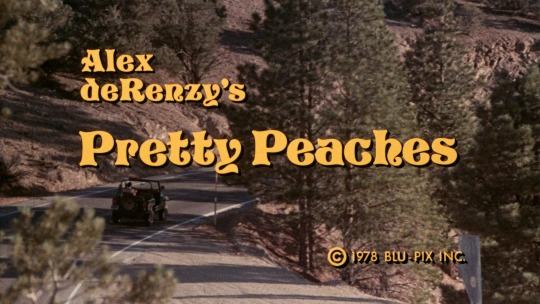
alex derenzy’s pretty peaches
9 notes
·
View notes
Text
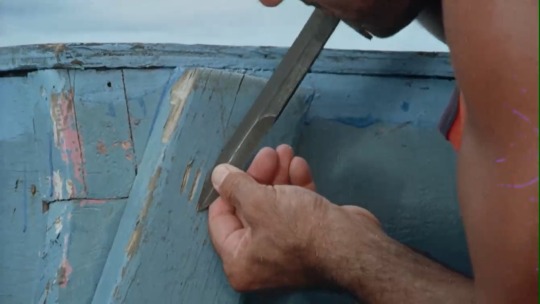

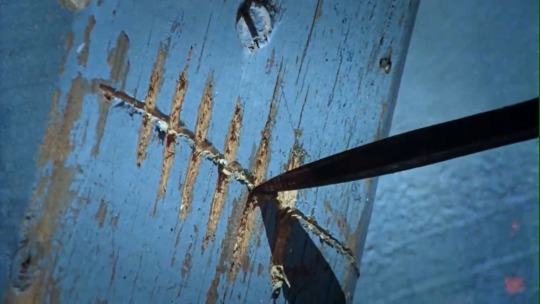
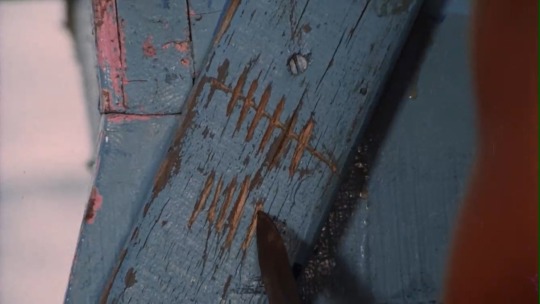
"What do the lines mean, Andrés?" "They show us how many days we have been lost."
Cyclone (1978) dir. René Cardona Jr.
#Cyclone#Cyclone (1978)#horror#horroredit#I'm back on my bullshit#and by bullshit I mean fixation on this one specific 70's exploitation film#you know how it is#(and as always: warning for animal death in the film itself)
10 notes
·
View notes
Text
youtube
Drive-In Massacre (1987)
#drive in massacre#drive in#film#horror#horror documentary#coming attractions#80s horror#80's horror#1980's horror#1980s horror#classic horror#60s horror#60's horror#70s horror#70's horror#exploitation#grindhouse
2 notes
·
View notes
Text
I cannot understand the backlash against this movie at all. The gay men in the movie are sympathetic and while not 100% accurate to a gay kinky lifestyle in every respect it feels like a genuinely humanizing narrative to place as the backdrop of this otherwise by the books serial killer thriller. I know the backlash was about how it was a Bad Look to portray the gay community as one defined by sex but this is and has always been an important part of gay liberation! The idea that men have sex, kinky and anonymous sex, is still an extremely controversial thing in 2024 and the movie felt if anything ahead of it's time. Am I arguing it's some secret masterpiece that moved gay rights ahead by leaps and bounds? No. But I will say it's an unflinching and ultimately sympathetic look at a culture that was, especially at the time, highly oppressed and forced into secrecy and looked down upon specifically for being sexual beings.
If someone can explain it to me in any way that isn't "it shouldn't be portraying men cruising because that's bad" I'm all ears but I've yet to hear any genuine explanation of how it's portrayal is exploitative beyond the fact it *is* showing kinky gay male sexuality.
It's not even commenting about the culture at large but a subculture of men who are being preyed upon because of the same vulnerability that drives them into risky behavior but somehow that exploitative to the whole LGBT nation I guess. Gays deserve to be the heros and victims in thrillers too and that doesn't feel like it should be controversial to say??
Oscar-winning actor Al Pacino donated the money he earned from gay film Cruising to charities after realising that it was “exploitative” of the queer community. The 1980 film, loosely based on a novel by Gerald Walker, stars Pacino as a police officer who goes undercover in the hope of tracking a serial killer targeting gay men in New York. Writing about the film in his new memoir, Sonny Boy, Pacino recognised that Cruising “became very controversial during its production,” with protestors worried it could harm the LGBTQ+ community “almost every day”. The film largely depicts gay men as living double lives and anonymously “cruising” for sex in public places and seedy motels. According to People, Pacino did not realise it was “exploitative” until shooting had finished. He wrote that he ultimately “remained quiet” instead of promoting the film after its release, and that he donated his proceeds to charitable causes.
Continue Reading
#idk this is a mess trying to explain my feelings but sometimes the backlash makes me genuinely upset#it doesnt feel deserved and i just Dont Get It#even the article just says its exploitative without saying why in any definitive terms and i feel like im being gaslit#like it says its exploitative because it shows men having hookups in seedy hotels and like ??? yeah#they were very much doing that in the late 70's early 80's#its almost like it was safer to have an underground culture based in secrecy over trying to have an open relationship#at the time when the aids crisis was brewing and the public image of a gay man was that of a creepy child predator#given the portrayal of gay men in media at the time its wild THIS was what was getting protested#not all of us are trying to do the nuclear family in the suburbs bullshit
28 notes
·
View notes
Text



Yotzeret Sheydim becomes Desdemona Disaster for her Female Antagonist project. A trilogy of harsh noise inspired by 60's and 70's exploitation cinema.
Bandcamp HERE
#industrial#yotzeret sheydim#desdemonia disaster#female antagonist#noise#harsh noise#harsh noise wall#Bandcamp
160 notes
·
View notes
Note
Media Demon AU
I come bearing gifts! Holds up Vox like a feral orange cat with mange and the saddest expression you ever did see. Charlie is going to love this pathetic sad little meow-meow, Sorry Alastor but Vox has literally done nothing to incriminate himself yet. He is Fair Game!
You are going to need people to push the plot who aren't OC's and Angel Dust, Sir Pentious and Husk seem a bit busy, also it would be funny if despite all attempts to the contrary Alastor fails to deter Vox from existing in his vicinity.
"Thank you for your patronage please come again!", Vox’s feet were heavy as he hung up his apron in his uniform cubby and handed his keys to the night shift. The Pentagram's night sky was as always brightly lit as if it were always day, heaven a barely visible white sphere in the sky. loud music thrummed through his soles, bombarding him from every angle in a incomprehensible language, it reminded him of the videos Val had shown him all those years ago of the tourist cities where Val had grown up.
Before Valentino had left Vox all alone.
Vox absently purchased a medium box of spicy seafood to go from a nearby hole in the wall restaurant, feeling more adventurous than the sandwich place on his usual eatery having been stationed at the register next to the ice cream scraper all day.
Vox could admit to himself that he and Val were a poor match, the sex had been great, no doubt.
But then Valentino had started talking to about breaking into a 'niche' on the porn market, and Vox had taken a swift step back.
There were no 'niches' in the porn market, the Media Demon had cornered them all before Earth had even conceptualised half of them. There were rumors that The Media Demon had created Pride Parades in Hell first and some looselipped hellborn had introduced the idea to the humans of Earth in the 70's, which was far more likely than the Media Demon seeing the future, hopefully.
The few ideas Valentino wanted to exploit were the very illegal, extremely dangerous stuff the Overlord's had collectively outlawed. Vox had backed out despite wanting to maintain the few connections he had down here. There was suicide and there was guaranteed doubledeath, still Vox alway wondered what happened to the moth...
Vox had stuck to what he was good at, working a pink collar job as a cashier whilst working on improving his writing thanks to the online libraries.
His 'One Hit Wonder' in the late 50's had set him for 40 years and Vox had used that money frugally but all that did was provide him a emergency fund as the millennium turned from one to the next and he kept himself afloat with temporary jobs.
But enough of Vox’s poor interpersonal skills and failed relationships it was time to eat, he placed the takeout box of crab boil on the table and began rummaging through the cupboard for plates and cutlery.
*bang, bang bang bang, bang*
Vox felt himself twitch as the familiar knocking sound on the door made him sigh and grudgingly open the door, security chain still in place.
"Hello Velvette" Vox gazed at the twin ponytailed sinner in tatty jacket and ripped dirty jeans.
Velvette was wearing her pathetic expression that said it all.
Vox stiffened his resolve, he was going to end today with a full stomach moochers be double damned.
"You are aware that just because you spawned with the body of a hungry teenager doesn't mean you actually are one?" Vox deadpanned.
"Come on Voxy, you like me, I'm, like, your bestie and you want to feed me"
Vox would not fold like a wet napkin, he refused instead adopting a sly expression.
"Should have though of that before you review bombed the people who feed you for clout, how's that working out for you?"
Velvette grimaced then grumbled, "They.. permabanned me for the next 50 years and tattled to their neighbours, who also banned me" Velvette admitted looking mildly embarrassed.
"So walk to the other side of Pentagram and eat there!" Vox hissed, this mooch was like a relentless cat, feed the stray cat indeed.
"Can't I just pay you to pick up my food?! I'm starving!" Velvette whined then froze, Vox did not do customer service when off duty and any requests for unpaid work were always poorly received.
Vox’s face changed from eyes and smile to a fullscreen taunting uwu emote with pink sparkles and gamboling unicorns as he slammed the door with a singsong soundboard clip of Hatsune Miku saying "No."
Velvette whined from outside the door knowing better than to bang on the door with the vicious old biddy landlady downstairs.
"Come on Vox! I didn't mean it like that! Look I know this place on the other side of the Pentagram, it's a sweet deal, free food, no rent."
"Probably a scam" Vox drawled Vocaloid imitation full volume just to piss her off.
"The royals are sponsoring it! It's legit!"
"Bitch, I Am American! Fuck Royalty!" Vox hollered.
Velvette smiled to herself admitting that line in full Vocaloid sounded hilarious, then went for the throat with Vox’s one weakness.
"And.. they have a fucking huge library!"
Vox went quiet for a moment and the sound of chains being undone heralded Velvette being dragged through the open door to the glorious spicy hot food.
"So what's the name of this place?" Vox asked handing Velvette a platter of glorious Crab Boil.
Then through a mouthful of hot seafood, Velvette uttered the words that would make a certain deer Overlord throw a private hissy fit at the unfairness of life, the universe and everything.
"It's called the Hazbin Hotel!"
I'm DYING over this. I love this Vox so so SO much. He's so sad and wet and pathetic and I want to wrap him up in a blanket burrito.
You're right, he hasn't technically done anything wrong, and the thing is, Vox in my head is easily influenced. Which, when surrounded by characters like Valentino is a very NEGATIVE trait to have. But if he were surrounded by characters like Charlie? That's... the perfect trait to have as someone working towards redemption. Vox in this AU would actually do INCREDIBLY well at the Hazbin Hotel— and Alastor would HATE IT.
Alastor's perfected his Customer Service impression at this point, so he wouldn't be awful at hiding his distaste. But Charlie would know. At some point she's going to ask what on earth crawled up Alastor's ass and died, and he'll probably try to sell the excuse "he used to date a black market dealer so I don't trust him," which will give him some leeway, but Charlie still won't entirely put up with it. Alastor will eventually cave with the thought that, if Vox is redeemed, he's no longer in Hell, and he will never have to deal with the picture box ever again.
I honestly love this little bookworm Vox so much, he's so precious 😭 I can imagine him in my head so perfectly. I bet since he isn't as well-off, he still has an older TV screen for a head, maybe an early 2000s model since he can't afford a flatscreen. It just makes the idea of him using a Hatsune Miku voice even funnier!!
Charlie's going to love this sad little meow meow so much. Her puppy eyes are unstoppable, sorry Alastor, you're going to have to suffer. That, or acknowledge that you're being unreasonable in blaming someone for something that happened in a timeline that no longer exists. Go on. Do it.
71 notes
·
View notes
Text
Sexy Sushi and 70's swedish exploitation films, as was always intended
#thriller a cruel picture#thriller en grym film#bo arne vinenius#christina lindberg#films#sheep stuffs#so THIS is my niche. now I'm just waiting to see if it reaches a potential audience#fanvids
68 notes
·
View notes
Note
Gotta say, November Kelly sounds like a hard drinking gunslinging outlaw as told through a series of 70's exploitation westerns with gruesome titles like 'The Many Crimes of November Kelly', 'The Two Revolvers of November Kelly', and 'The Vengeful Trigger Finger of November Kelly'.
🤠
344 notes
·
View notes
Note
So, uhh, i had this as a theory of some sort, but now im just confused because the 007n7 doesn't remember his son is apparently retconned (according to some yt comments), and im just c o n f u s e d. But uh, here are some hc:
- mainly bcz 007n7 isn't liked by the survivors entirely, so in secret 007n7 just duplicates his clones and pretends it's someone he can talk to about his stress and anxiety
- c00lkid probably died but got revived by 1x or by the spectre(cuz like there's this one incident that 007n7 lost his son to, [it's often referenced to be kidnapping by the Spectre, but i headcanon be died entirely])
- Reviving him from the dead had consequences that made him look meaty and fleshy, but for him, it felt like a nap. (Hence why he thinks the survivors are just sleeping when dead)
- Another reference to his reviving is that his clones/pizzaguys come out from the ground like zombies
- According to psychological research, a parent losing a child can be TRAUMATIC as children SHAPE their parent and their personality and become in a way a sense of identity for the parent.
So lemme just apply this to 007n7 with some other facts:
- he probably got into forsaken not shortly after his son loss so grief is quite strong
- Knowing he became a better person for c00lkid and had an entire new form of lifestyle for his baby, this losing a child experience is extremely traumatic to him, and he develops ptsd from this.
- he cant visit places that reminds him of c00lkid, and will be extremely overwhelmed if he did
- the c00l carnival is the most depressing for him, as EVERYTHING there reminds him of his son, so he really doesn't like that map and tries to avoid it.
- At least on 70% minimum per day, he thinks about his baby boy and what he is gonna do with his life after escaping forsaken. If he ever does
- he entirely lost meaning of life and what he was supposed to be doing with his life after losing c00lkid:
Go back being an exploiter? But he promised himself for his not to do so and his son's exploiting group just would remind him more.
Get a job? His depressive episodes from the grief wouldn't really contribute much.
- after seeing c00lkid as the killer, and recognising him, he bargains with himself that c00lkid can't be alive, but is completely stunned when seeing REALLY upclose what happened to c00lkid
- he is too stunned that he doesn't try to escape or fight back when c00lkid is about to kill him because that is probably the only time he can have a good look at him and see what happened to his sweet child face to face
- parents with a child loss are more likely to contribute to religious beliefs, so two times tried to lure him into their cult, but 007n7 did luckily realise that the cult isn't a good idea with the whole respawning ideolgy after seeing what happened to c00lkid
I have more hcs tied to psychological trauma for 007n7 but i think this is enough for now.
And 1 happy hc:
- c00lkid doesn't like eating tomatoes bcz the redness reminds him of his red slin and thinks he is eating himself (though this only applies to the fruit, on pizza it doesn't matter)
- can i be 🔫🐟 anon? :]
Of course you can.
#forsaken headcanons#forsaken#forsaken roblox#roblox forsaken#🔫🐟 anon#c00lkidd forsaken#007n7 forsaken
45 notes
·
View notes
Text
The Post-Tragedy Horrors of Despair Time
Hello everyone, Mod Bubbles here!
This Halloween, I decided to do something a little different. Rather than a dedicated post or song parody, I've decided to share a worldbuilding analysis. A pretty fortuitous one, since we've recently completed Chapter 2 of Despair Time.
I'm sure it's no exaggeration to say that DT is a pretty dark fangan, especially within its own context. I wouldn't say it's as grimdark and nihilistic as some people are convinced it is, but there's some elements to it that I feel are worth analyzing going forward.
See, it's been established that DT is set within the Hope's Peak continuity. This would mean that the canon games sans V3 (and if you want to have fun with it, other fangans like the Another series) have all happened here.
According to a Q&A, DT is set around 70-80 years after the end of the Tragedy, so if you wanted to estimate based on in-universe dates (such as Makoto's Hope's Peak brochure saying 2010 in the earliest version of the game but 2014 in a re-release), that would put it sometime around 2080 to the mid-2090s. Veronika backs this up in Chapter 2, when she mentions the Tragedy happened "almost a century ago."
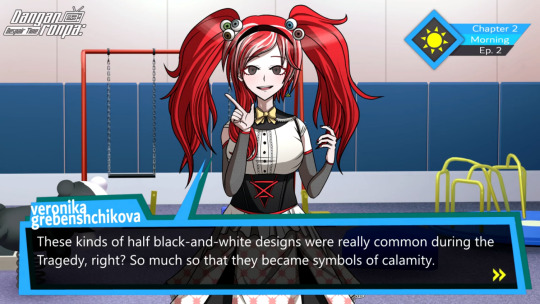
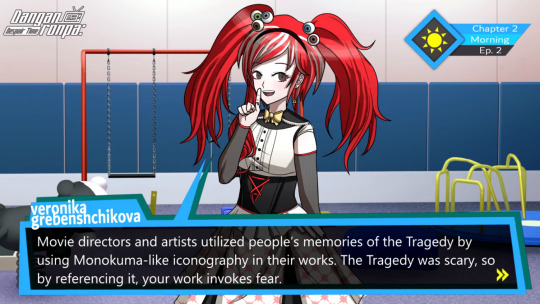
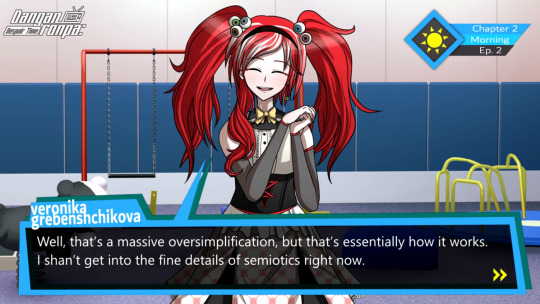
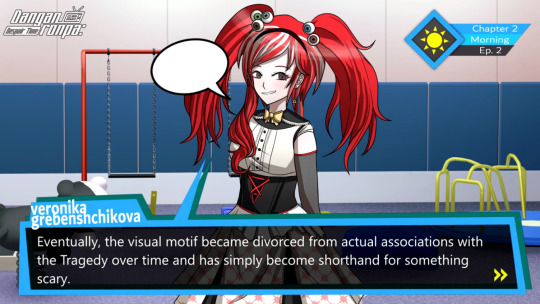
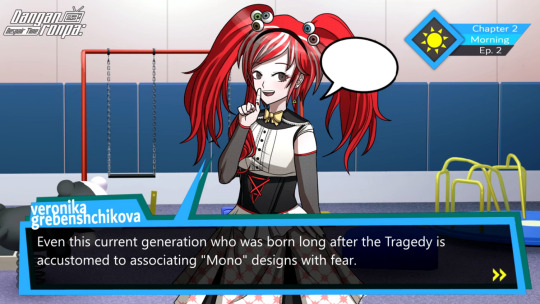
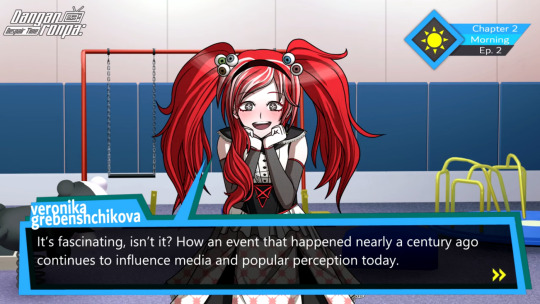
Why do I bring all this up? Because if you looked at DT, you'd probably never guess it was that deep in the future. I know I didn't at first. And this is all by design, but it goes beyond simple cosmetic details. Allow me to explain to you why this is probably the darkest timeline that could've happened after Class 78's victory over Ultimate Despair.
___________________________________________________
Modern Stagnancy
So if we look at the obvious, the world of DT looks pretty much identical to our own, which should be a good thing. When you consider that this is set after The Biggest, Most Awful, Most Tragic Event in Human History- an event that saw societal collapse, wars happen for the sake of destruction, massive pollution, rampant murder, and countless killing games- then it almost seems utopian.
Cities have long since been rebuilt, the skies are clear, there are functional trains, movies, celebrities, schools, music, art, Ted-Talks, the internet, all the trappings of normality. And that's really the problem.
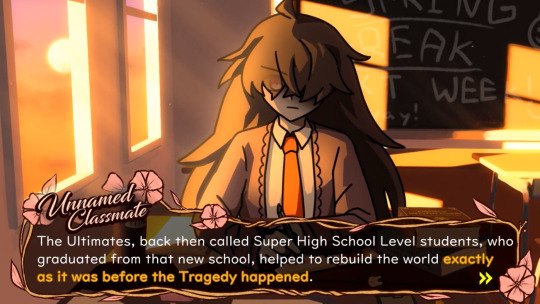
Once the recovery efforts were underway, the goal of those in power was to rebuild things exactly as they used to be. Bear in mind, the world looks like our modern day, yet this is set deep into the late 21st century. In that context, the world almost seems stunted in its growth or even that it's regressed, given that CDs and DVDs are used rather than USBs or digital downloads.
Not only that, but this extends to societal attitudes as well. Nico was the victim of bullying over their status as an enby by everyone who knew, including their own father. It's almost the 22nd century and anti-LGBTQ bigotry like this still exists.
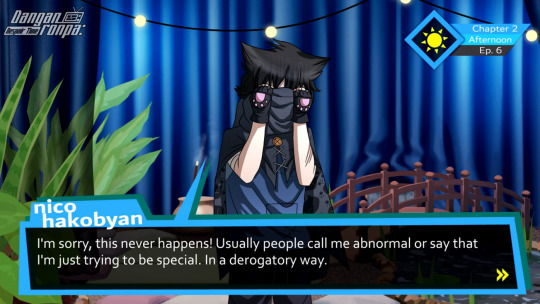
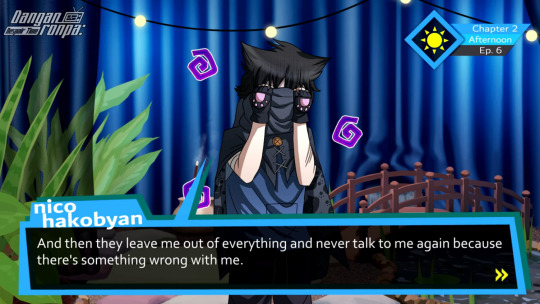
In that context, it feels less like the world is recovering and more that it's been stuck in its pre-Tragedy status quo, right down to continuing the Ultimates program that contributed to The Tragedy in the first place. And who would be motivated to do that?
2. Hope's Peak And Their Kin Are Stronger Than Ever
Probably one of the most contentious aspects of DR3's ending is that, after everything the people in charge of it were responsible for- exploiting their students, covering up crimes, human experimentation- Hope's Peak Academy was rebuilt by the survivors, now with Makoto as headmaster.
Now, one could make the argument that Makoto is a better example of hope and thus better suited to lead the school to follow its stated ideals than the Steering Committee ever was. That very well may be true, but as they also proved, nobody stays in charge forever. And now, because of his decision, Hope's Peak isn't contained to Japan.
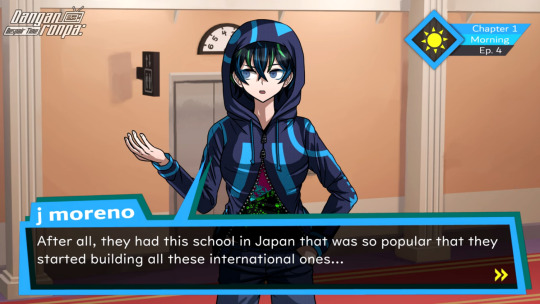
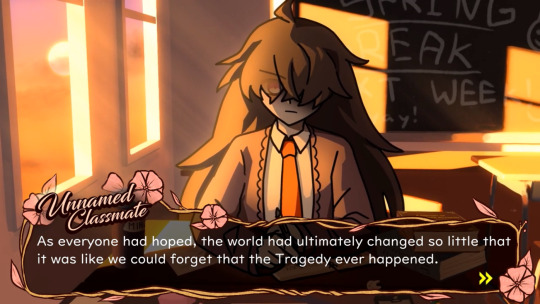

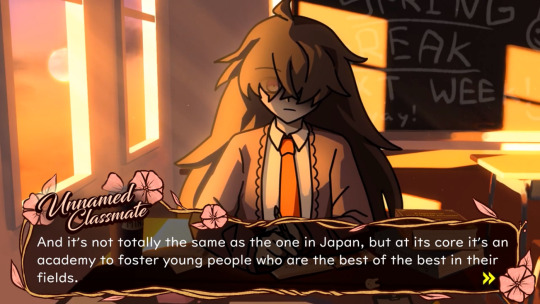
There now exist Hope's Peak branches in every major country on Earth, with two in the United States. Teruko and co. are students of the East Coast Division's 27th class, meaning that one opened almost thirty years ago. This would also mean that Japan's Hope's Peak would have seen over 150 classes since its inception.
I bring all this up because, as has been made very clear by canon, Hope's Peak is a terrible place even in concept. When you remove the idyllic aspect of fostering talent and guaranteeing its students are set for life, the truth is that ultimates are stunted in their development. They're only encouraged to excel in their particular field, whether they really want to or not.
In addition, Hope's Peak has always quietly held this belief that only people with talent hold any worth; those without talent are just "ticks" who leech off the success of their betters. Characters like Byakuya and Nagito echo those very same sentiments, this extreme elitism that encourages people to view the "99%" as inherently inferior.
Even if you wanted to say Makoto managed to undo that idea, can we really say this divide would never come up again? No matter how many years pass or how many divisions of Hope's Peak are set up across the world? That seems really far-fetched to me.
Consider Min's bonus video. As she explains, she was never scouted by the school. Instead, America's Hope's Peak announced something called the Ultimate Contest for Eminent Students, where eligible high school students would be allowed to take a test, the best of whom would be admitted to the school when they graduated. The catch is that they had 12 years to prepare. Min, who was only 5 at the time, wasn't initially going to participate, but then the founder of a company called XF-Ture Tech approached her family- who was quite poor- and wanted to sponsor her in exchange for her participation.
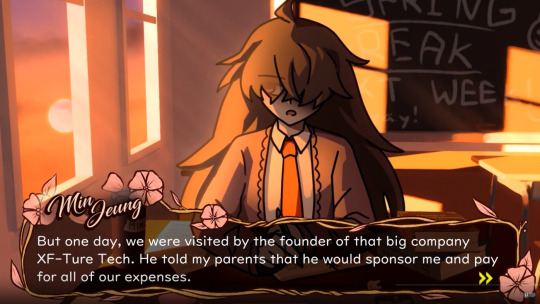
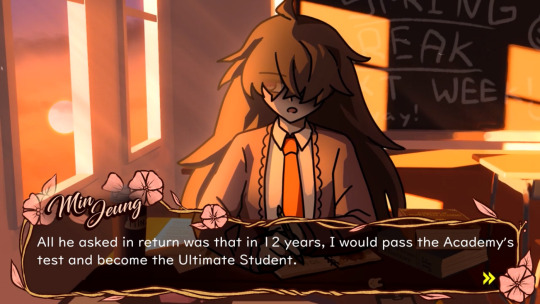
She spent her entire life preparing for that test. And when she passed, she realized it was all really just an experiment to create their ideal version of the Ultimate Student. She even doubted that she was the best in terms of raw score, just that she met their desired expectations by cutting out everything else in her life for that test.
It also extends beyond just Hope's Peak itself. Those with power and influence now hold a strangle hold over the most vulnerable people out there, as we can see with the Lacroix family.
Rose wanted to help her family out of their financial limitations using her painting skills and her photographic memory, which lead to her becoming an art forger. However, at 15, she was found out and her family faced tens of millions in fines. This would've been the end, but then they were bailed out by a billionaire named Richard Spurling, founder of the Spurling Foundation. In exchange for clearing her charges, Rose had to sign a contract that meant she doesn't own the rights to anything she paints.
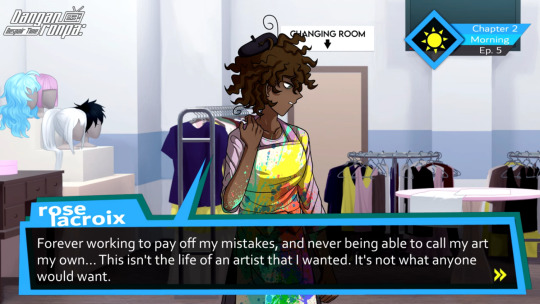
She hates what her life has become, where she can only ever really paint things at the whims of the Foundation because it was the only way her family could survive that mountain of debt. The exploitation there is undeniable.
No matter where you look, there's still exploitation and experiment abound with the school, corporations and the wealthy. And if you think the Spurling Foundation sounds bad here, they're implied to be responsible for something much worse.
Which is also brings us to Xander. See, there's a curious detail when we first meet him in the prologue:

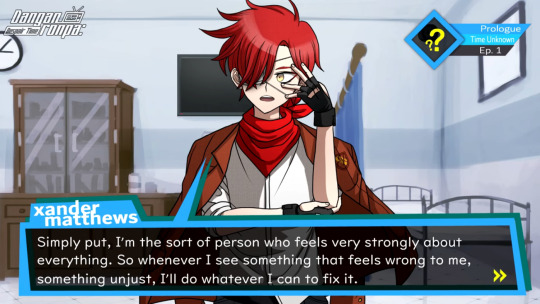
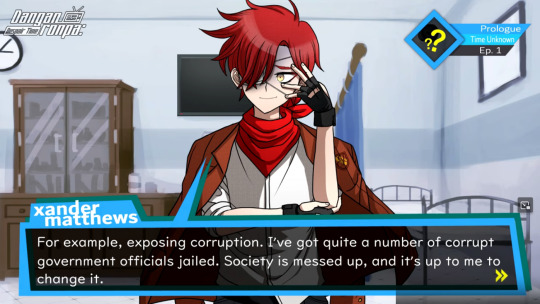
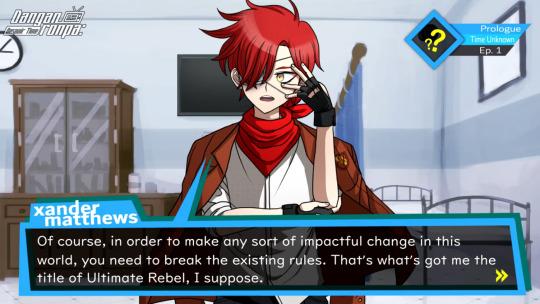
And I agree. Xander being the Ultimate Rebel really doesn't fit him, as he's better described as the "Ultimate Revolutionary." Except there's no chance Hope's Peak would call him that, instead paying lip service to the idea in a digestible format to still support the status quo.
Xander is an activist who works to oppose corruption, but the ones who benefit from corruption wouldn't want him to flaunt that. It's a subtle but very clever detail that shows those in power still maintain a hold even over their beloved Ultimates.
They probably had no issue throwing the obviously corrupt under the bus to save their own hides, and raised Xander up with a quasi-supportive title. It gives them a chance to look like they're supporting what he's doing while still tying an element of a "rebellious child" to his image with the name.
Had Xander survived, he had a good reason to want to bring them down, especially the Spurlings.
3. Illness and Poverty
Xander's bonus video clued us in on what I believe is one of the most important parts of DT's continuity: the fate of the town of Chariton, implied to be where he lived. It seemed to be a small town, home to a couple hundred or a couple thousand people, where the only hospital for miles was "dinky, understaffed" and barely able to handle a minor flu outbreak. They were completely unprepared for what became known as the Chariton Incident.
When he was around 14, the town was hit by a disease that caused those infected to decay from the outside in; their limbs would stop working before their organs did, meaning they would just lay there and feel themselves slowly dying. So many died that nobody was left to move the bodies, so they were left where they fell, rotting in the summer heat.
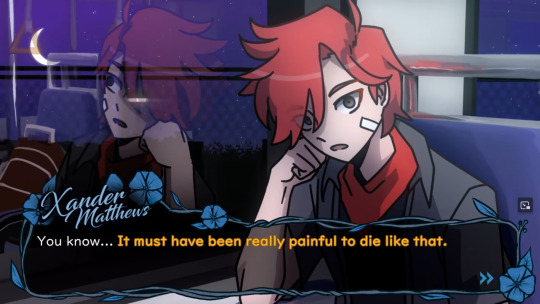
The cause of this outbreak? A contaminated river that served as the town's water source. Chariton was an impoverished community, where people had no money to treat their water, get medicine from a nearby city or to even move out. It's also implied, based on Xander's anger, that Duke Spurling was partially responsible and that he got off the hook, which may be what drove Xander to become the Ultimate Rebel. Especially when you consider he's the only surviving member of his family.
Duke Spurling is, as the named implies and Dev has confirmed, the younger brother of Richard Spurling. The money and influence needed to get his brother off the hook is the very same that has the Lacroix family under his thumb.
So as we can see, Chariton was a major event in DT's canon. Not only does it showcase corruption, it also showcases understated but still prominent problems in the post-Tragedy U.S. If you pay attention, you'll also notice Teruko, Min, and Rose mention poverty playing a role in their lives.
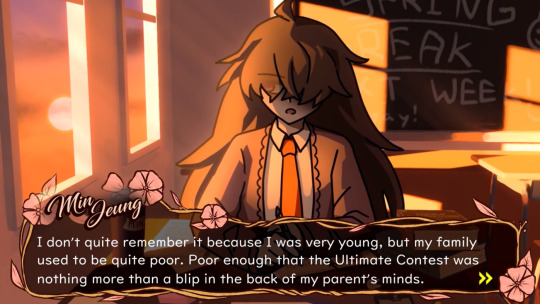
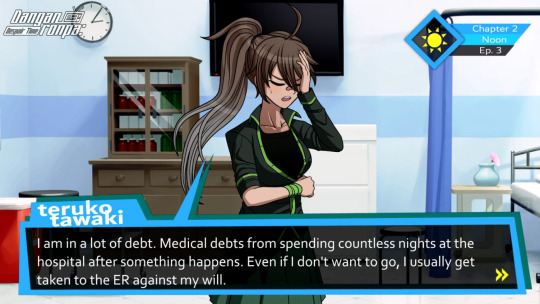
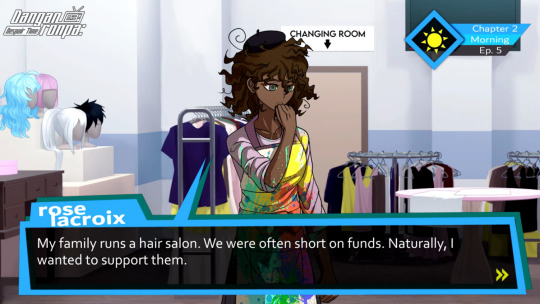
As we can see, poverty plays a major role in their lives, and that extends beyond a personal level. Chariton's poverty is why the incident happened at all, and a big reason is because it's also an example of a medical desert.
"Medical desert" is a term used to describe regions whose population has inadequate access to healthcare. This can be all healthcare in general or in specialties such as dental care or pharmaceuticals. This is an especially prominent problem in rural areas, but it can affect urban ones too.
If that sounds implausible to you, today it's believed that around 30 million Americans- over 1% of the population- live over an hour from a hospital. Can you imagine how bad the problem is in a world after The Tragedy? All the damage to infrastructure, established institutions, the economy, and the population? I doubt Chariton was the first to see something this bad.
Ace's execution gives us more clues. In the Death By Illness section, there are several newspaper clippings on the wall, most of which are readable. One flashes on screen saying "Unexplained Illness Kills Thousands," which I believe is another reference to Chariton (why else would it flash on screen?), but there's more as well:
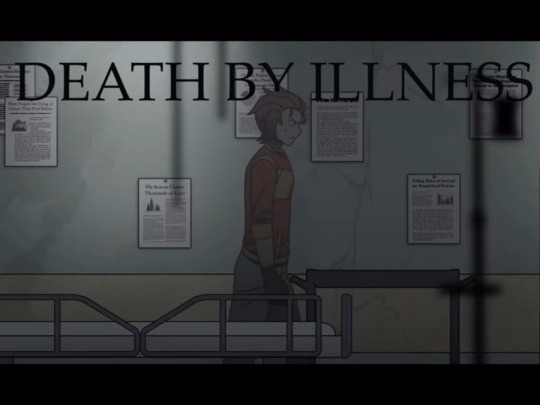
"More people are dying of cancer than ever before"
"Flu season claims thousands of lives"
"Falling rates of survival for hospitalized patients"
"Antibiotic-resistant infections a growing threat in this hospital"
One is harder to read, but I believe it mentions Chronic Kidney Disease being tied to an early death
Now, the interesting thing is that most of these are modern headlines, and they can be pretty misleading. The cancer one is actually based on the fact that more people are living longer lives, thus are reaching ages where they develop cancer due to their cell infrastructure breaking down naturally. It doesn't mean there's more cancer cases overall across all ages.
The only one that's not true is the falling rates one. Which suggests that not only was it Chariton, but healthcare infrastructure in general after the Tragedy seems to be a mess.
See, I was assuming that these articles are identical to what we see today. But it's also possible that the cancer one is now literally true, and it could be because The Tragedy was rife with this kind of horror. We know that terrorism, coups and wars happened for no reason other than to spread despair across the world.
Could you imagine how many nuclear, chemical, biological and radiological weapons were used? How many diseases and hazardous materials were seeded into the environment? If it's unsafe to drink tap water after a serious hurricane or earthquake, how bad is the problem when contamination is the goal?
And this doesn't even touch on how disturbingly easy it would be to spread long-term illnesses such as HIV or CJD in contaminated food and medical supplies. Some diseases have latency periods that last decades, meaning they could still be killing people even by the time DRDT is set.
Antibiotic resistance is also a very real and serious problem. Even today, some strains have become immune to even the strongest antibiotics available. This has given rise to Vancomycin-Resistant Enterococci or VREs, which are immune to basically every medication we can throw at them.
Now, it's still possible to deal with them, such as with naturally antimicrobial metals or experimental treatments such as CRISPR and Phage Therapy, but in a world that saw such a massive hit to everything? I'm certain antibiotic-resistance bacteria have become much more serious, potentially resulting in epidemics over the years.
And when these things happen, it's always the poor who suffer the most.
4. Lethal Repetition
Now we come to the most obvious example, something highlighted by the same reveal that DT is set nearly a century into the future:
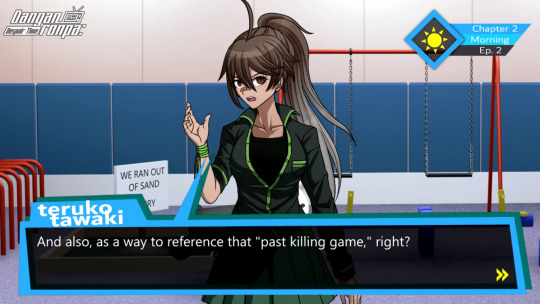
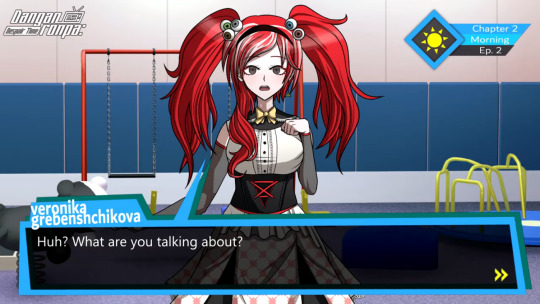
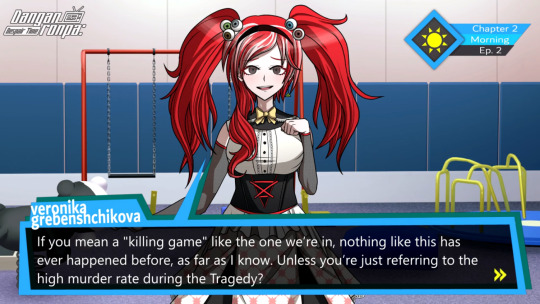
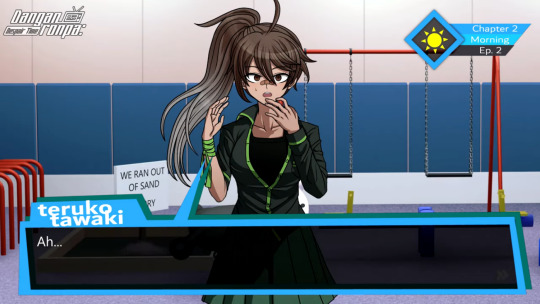
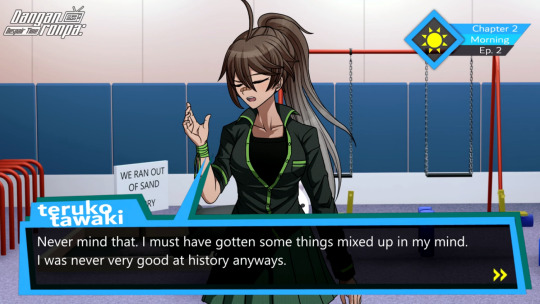
Veronika, who provided us with information on the effects the Tragedy still has, apparently has never heard about The Killing School Life.
Now, it's important to keep in mind that most of the Killing Games in DR were pretty secluded and motivated. SDR2 was only broadcast to Future Foundation with the goal to allow Junko to escape into the real world, for example. However, DR1's Killing School Life was broadcast globally as a means to break humanity's hope by showing the Ultimates slaughtering each other. Instead, Makoto and co. managed to reinvigorate the world's hope and played a pivotal role in ending the Tragedy.
...And yet Veronika apparently hasn't heard any of it.
Now, there's two possibilities here, neither of which are good:
One is that the Mastermind has removed their knowledge of previous killing games, specifically. Now, I actually consider this an unlikely explanation because, not only does Teruko seem to vaguely remember the Killing School Life happened, but what's the goal in doing so for the participants?
The canon games all had solid reasons why the other masterminds erased the participants' memories: the revelation that they'd been killing their friends, the fact that their past identities were supposed to be undone to save them, even the fact that they weren't even who they were supposed to be in V3.
But what's the purpose of suppressing the memories of the Killing School Life in the participants themselves? Especially since this game is also apparently being broadcast to the outside world, although we only have MonoTV's word on that. Is it to undermine everything the survivors achieved or to get the participants not to consider the same strategies?
The other, more plausible explanation to me is that the mastermind isn't the one who erased their memories. The outside world did.
It's possible that, in the decades since the Tragedy and the drive to return things to the status quo, knowledge of the Killing School Life has been suppressed. It would be so easy to blame Makoto's decision to rebuild the school, but it's just as plausible that his attempts to genuinely reform the school were undone over the years.
Corporations and those that came after had a vested reason to improve their own reputations, and why would they allow their connection to the Tragedy to remain public knowledge? The entire thing began as a revolution of lower classes against the rich before it became a whirlwind of mindless violence.
So what does this mean for DT? This is more hypothesizing on my part, but I'd say this could tell us a lot about the potential motivations for this very killing game. Could it be someone trying to remind the world about this event and how we got here? Is it more retribution against the wealthy? Is it someone who was inspired by Junko to slaughter her friends? Or is it something else entirely? And what role does Teruko have if someone involved is so hellbent on trying to kill her?
For now, we can only speculate. But I can tell you that, based on what we've seen here, DT is probably the darkest future we could've gotten out of the canon series.
Happy Halloween, everyone!
#danganronpa#fanganronpa#danganronpa despair time#despair time#drdt#xander matthews#teruko tawaki#veronika grebenshchikova#rose lacroix#min jeung#nico hakobyan#j moreno#worldbuilding analysis#a different sort of post admittedly but this has been on my mind since Chapter 2 started and I really wanted to share#I'm really impressed by how much worldbuilding the Dev has slipped into all this#Genuinely great writing
65 notes
·
View notes
Text
thinking about a young, stereotypically pretty-boy (for masculinity in the 70’s) Gordon starting on the force
and the idea that some of his key personal traits and habits and appearance - the big glasses, thick mustache, perpetual 5 o’clock shadow, close shorn hair, disheveled style, big coat, open “disdain” for the more “ridiculously elaborate” svelte dress and personal care habits of his affluent peers like the Waynes and other key Gotham political and financial figures - all stemmed from trying to hide that
just… one too many uncomfortable looks from his superior officers… one too many snide comments from his other brothers compatriots allies coworkers competitors rivals enemies on the force around him…
and that strategizing brain tick-tick-ticks ahead calculation the risks and the dangers and the suitable solutions and the next pair of glasses he buys are chunky enough to hide his bright eyes still soft and not crinkling around the edges or baggy beneath yet, and a scraggly mustache slowly starts to overtake his pretty, pouting upper lip, and the classic seventies ginger waves curling just below his ears get buzzed in tight to match the butch, military look of the rest of his department and he slams that closet door tighter and tighter shut
and STILL he feels like a sore thumb of a target for the first few years, sticking out swollen and unnatural and all the more obviously an interloper. like trying and failing to emulate masculinity makes it even plainer that he wasn’t built for it.
until one day he puts his glasses on and notices his mustache has really properly come in nice and full and he’s become accustomed to how his short hair has settled around his brow and he’s even packed on a few strong pounds around his shoulders and midsection, soft but sturdy
and it’s not the same kind of comfort he used to feel when he looked at himself and would fantasize having the freedom of the long-haired hippie boys in their lanky bodies and lively flowers and flowing clothes and wandering hands and open thighs
but seeing a new prescience, that of the powerful men in those Other magazines, with their thick facial and body hair and dirty greasy jeans and white tank tops pulled tight around large chests and bellies and powerful hips and big wide palms and eyes honed sharp and piercing by the experience of the world… the sort of eroticized masculinity pouring out from the centerfolds of the magazines he hid under his bed until his marriage…
it’s not like he hadn’t been settled with himself before. it’s not like he didn’t feel like a man, or thought men couldn’t or shouldn’t BE pretty… but as much as he hates to credit the fear and the pressure of trying to survive amongst those wolves with ANYTHING, he hadn’t exactly been HAPPY either. Had never sought out his own manhood, didn’t think anything of it all really.
Not like he does now, decades later, no longer playing a character with it but embodying it fully. in fact, so much so he’s having to temper it in a different way - fear of enjoying it too much, knowing that to keep flying below the radar he has to walk a fine, fine line.
Juuuust masculine enough, juuuuuust All American Man enough, knowing that if he enjoys it a little Too Much and pushes it a little Too Far someone will spot the caricature of it all and see him for what he is. But he’s had practice. Between the Chicago and Gotham police forces he’s come up in the toughest, most judgmental, most back-biting pit of hissing vipers looking for any weakness to exploit. He knows how to straddle the line between Performance and Genuine to keep those baying hounds off track - tossing them just a bit of scent they expect so they never sniff around any closer. So they presume they’ve found all there is and skulk off in search of a different target.
Yeah, he knows how to make sure the self-centered power-hungry ambition-blind cops and politicians and criminals and even his wife only see what they expect to see. What they WANT to see. After twenty years, he’s finally confident in that.
So he’s utterly unprepared when this fucking nutcase in kevlar armor shows up all genuine and honest and moral as fuck despite the violence he enacts, who’s eyes and words cut sharp as the curved blades he throws straight through Jim’s mask just as clearly as the Gordon can’t make heads or tails of the caped stranger’s own.
50 notes
·
View notes
Text
Have you played THEY CAME FROM BEYOND THE GRAVE ?
By Onyx Path Publishing

The era of Hays Code compliant horror movies is over. No more black & white films of screaming women with beehive hairdos and scientists in tucked in button ups fighting Shark people in bad rubber suits. It’s the age of full color movies of cool cats in bell bottom jeans and foxy mamas with Afros visiting haunted castles and coming face to face with The Devil Himself. Based off late 60’s and 70’s low budget exploitation horror movies, players are actors playing characters based off common character archetypes from the genre. The dupe who wandered into the hotel full of serial killers by coincidence. The mystic who receives cryptic visions from seeing zombies rise from the grave. The Hunter who knows how to fight a werewolf with their own hands and other classic horror movie characters are playable. With the GM as the director to this splatterfest, prepare to tackle horrors in the 70’s and even the late 1800’s as you flash back to play as your past lives in a different era of horror. Stories could crossover between the two centuries as you can learn why the vampire who owns the discotheque has sworn to kill you in revenge for what your great, great grandfather did to him. Classic movie tropes, bad one liners and movie editing magic are your arsenal in this game. Can you fight and survive the undead and damned and make a cult classic?
36 notes
·
View notes
Text
J.T. Walsh Roles - Scumbag Scale Edition!
Let's face it, he played a lot of 'scumbag' characters, so I thought I'd collate where I would place some of them on a scale of worst to... least worst!
Starting with who I think was the best of a bad bunch - Ins. Terence Niebaum - The Negotiator (1998). Niebaum took bribe money to help cover up some dirty cops stealing from the collective police pension fund.

Next, Martin Swayzak - Backdraft (1991). Shut down some fire stations, reducing the numbers of paid firefighters, meaning fewer available fighters which resulted in some unnecessary deaths. Again, I think there was money involved.

Then we have Sgt. Maj. Dickerson - Good Morning, Vietnam (1987). A man wound so tight that Robin Williams' character described him as 'in more dire need of a blowjob than any man in human history'. He was just an overall arsehole and his commanding officer called him mean and shipped him off to Guam!
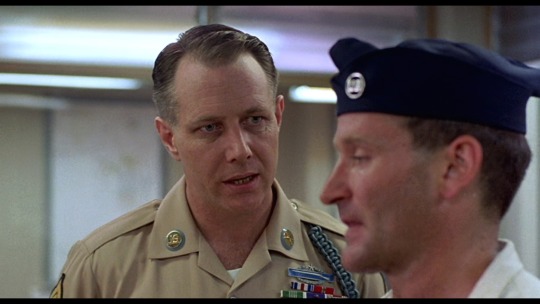
Now we're getting to the larger ego characters - Charles F. Drucker - Crazy People (1990). A man with command and charisma, and very little moral compass as he takes advantage of mentally ill patients who are making him money with their 'honest ads' campaign and getting very little in return.

It was scary how well he was able to play creepy characters, and Cake - Persons Unknown (1996) was definitely a bit of a creeper! Seemed to be playing all angles at once, even going so far as to attempt to assault a woman in a wheelchair.

I wasn't sure where to put Danforth Keeton III - Needful Things (1993) initially, but, he does have a terrible gambling addiction and kills his wife... He's a fabulous character though! This first scene is my favourite!
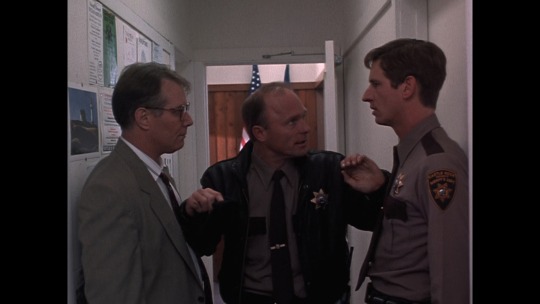
On the face of it, Wayne Brown - Red Rock West (1993) doesn't seem too terrible, but he does plot to have his wife murdered and did embezzle $2 million...
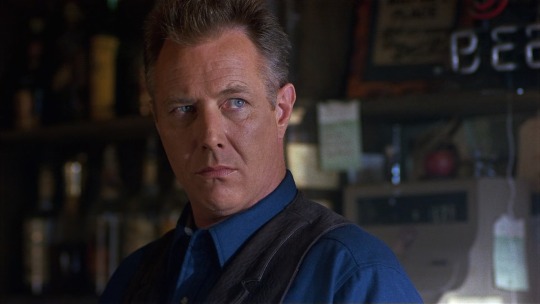
Lt. Quinn - Black Day Blue Night (1995) starts off by appearing to be chasing down a bunch of bank robbers, only for it to be discovered that he was one of them and has been stiffed of his share! Uses anyone and everyone to track down the money, killing multiple people along the way... Definitely a dirty cop!

Stephen Seldes - Defenseless (1991) starts off as a businessman who unknowingly lets out a building to an adult entertainment company who hires underaged girls to star in their films. It is quickly discovered that not only did he know about the company, he was taking money directly from them and was grooming and pimping out his own underage daughter. Definitely up there in the scumbag rating!

Lt. William Eyler - Gang in Blue (1996) was scummy on a whole other level. He actually starts a baseball team with his partner at some point in the late 60's, early 70's called The Phantoms, using it as a cover to hide racist extracurricular activities against people of colour. His entire department is part of the club and falls under FBI investigation.

Second to last, we have Charles Bushman - Sling Blade (1996). A seemingly sex-obsessed murderer who loves nothing better than to tell anyone who will listen about his exploits before he was caught. The only reason he isn't number one scumbag is largely down to whether any of the stories he told were genuinely true, or if they were embellished...
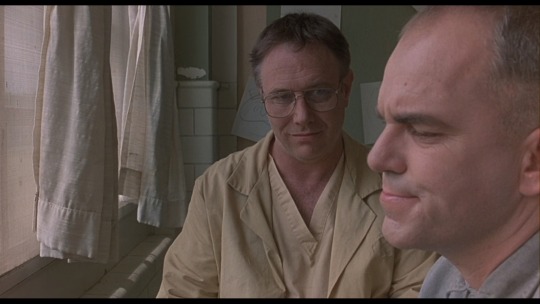
And, our number one scumbag is... Warren 'Red' Barr - Breakdown (1997). Do we really need to say why?! Kidnapping, extortion, theft, murder... You begin to wonder if there was anything he wouldn't do! He has very few redeeming features, other than the fact that his son seems to idolise him... Which, given what he was spending his time doing, wasn't exactly a good thing...

#underrated actors#j.t. walsh#jt walsh#character actor#scumbag characters#breakdown 1997#backdraft 1991#crazy people 1990#Sling Blade 1996#The Negotiator 1998#Needful Things 1993#Gang in Blue 1996#Defenseless 1991#Red Rock West 1993#Good Morning Vietnam 1987#Persons Unknown 1996#Black Day Blue Night 1995
27 notes
·
View notes
Note
What are some of the coolest computer chips ever, in your opinion?
Hmm. There are a lot of chips, and a lot of different things you could call a Computer Chip. Here's a few that come to mind as "interesting" or "important", or, if I can figure out what that means, "cool".
If your favourite chip is not on here honestly it probably deserves to be and I either forgot or I classified it more under "general IC's" instead of "computer chips" (e.g. 555, LM, 4000, 7000 series chips, those last three each capable of filling a book on their own). The 6502 is not here because I do not know much about the 6502, I was neither an Apple nor a BBC Micro type of kid. I am also not 70 years old so as much as I love the DEC Alphas, I have never so much as breathed on one.
Disclaimer for writing this mostly out of my head and/or ass at one in the morning, do not use any of this as a source in an argument without checking.
Intel 3101
So I mean, obvious shout, the Intel 3101, a 64-bit chip from 1969, and Intel's first ever product. You may look at that, and go, "wow, 64-bit computing in 1969? That's really early" and I will laugh heartily and say no, that's not 64-bit computing, that is 64 bits of SRAM memory.


This one is cool because it's cute. Look at that. This thing was completely hand-designed by engineers drawing the shapes of transistor gates on sheets of overhead transparency and exposing pieces of crudely spun silicon to light in a """"cleanroom"""" that would cause most modern fab equipment to swoon like a delicate Victorian lady. Semiconductor manufacturing was maturing at this point but a fab still had more in common with a darkroom for film development than with the mega expensive building sized machines we use today.
As that link above notes, these things were really rough and tumble, and designs were being updated on the scale of weeks as Intel learned, well, how to make chips at an industrial scale. They weren't the first company to do this, in the 60's you could run a chip fab out of a sufficiently well sealed garage, but they were busy building the background that would lead to the next sixty years.
Lisp Chips
This is a family of utterly bullshit prototype processors that failed to be born in the whirlwind days of AI research in the 70's and 80's.
Lisps, a very old but exceedingly clever family of functional programming languages, were the language of choice for AI research at the time. Lisp compilers and interpreters had all sorts of tricks for compiling Lisp down to instructions, and also the hardware was frequently being built by the AI researchers themselves with explicit aims to run Lisp better.
The illogical conclusion of this was attempts to implement Lisp right in silicon, no translation layer.
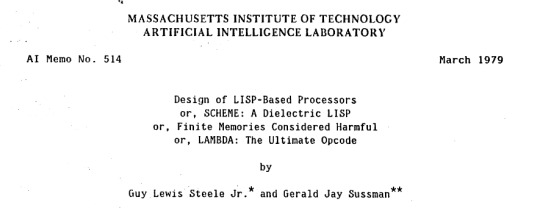
Yeah, that is Sussman himself on this paper.
These never left labs, there have since been dozens of abortive attempts to make Lisp Chips happen because the idea is so extremely attractive to a certain kind of programmer, the most recent big one being a pile of weird designd aimed to run OpenGenera. I bet you there are no less than four members of r/lisp who have bought an Icestick FPGA in the past year with the explicit goal of writing their own Lisp Chip. It will fail, because this is a terrible idea, but damn if it isn't cool.
There were many more chips that bridged this gap, stuff designed by or for Symbolics (like the Ivory series of chips or the 3600) to go into their Lisp machines that exploited the up and coming fields of microcode optimization to improve Lisp performance, but sadly there are no known working true Lisp Chips in the wild.
Zilog Z80
Perhaps the most important chip that ever just kinda hung out. The Z80 was almost, almost the basis of The Future. The Z80 is bizzare. It is a software compatible clone of the Intel 8080, which is to say that it has the same instructions implemented in a completely different way.
This is, a strange choice, but it was the right one somehow because through the 80's and 90's practically every single piece of technology made in Japan contained at least one, maybe two Z80's even if there was no readily apparent reason why it should have one (or two). I will defer to Cathode Ray Dude here: What follows is a joke, but only barely

The Z80 is the basis of the MSX, the IBM PC of Japan, which was produced through a system of hardware and software licensing to third party manufacturers by Microsoft of Japan which was exactly as confusing as it sounds. The result is that the Z80, originally intended for embedded applications, ended up forming the basis of an entire alternate branch of the PC family tree.
It is important to note that the Z80 is boring. It is a normal-ass chip but it just so happens that it ended up being the focal point of like a dozen different industries all looking for a cheap, easy to program chip they could shove into Appliances.
Effectively everything that happened to the Intel 8080 happened to the Z80 and then some. Black market clones, reverse engineered Soviet compatibles, licensed second party manufacturers, hundreds of semi-compatible bastard half-sisters made by anyone with a fab, used in everything from toys to industrial machinery, still persisting to this day as an embedded processor that is probably powering something near you quietly and without much fuss. If you have one of those old TI-86 calculators, that's a Z80. Oh also a horrible hybrid Z80/8080 from Sharp powered the original Game Boy.
I was going to try and find a picture of a Z80 by just searching for it and look at this mess! There's so many of these things.

I mean the C/PM computers. The ZX Spectrum, I almost forgot that one! I can keep making this list go! So many bits of the Tech Explosion of the 80's and 90's are powered by the Z80. I was not joking when I said that you sometimes found more than one Z80 in a single computer because you might use one Z80 to run the computer and another Z80 to run a specialty peripheral like a video toaster or music synthesizer. Everyone imaginable has had their hand on the Z80 ball at some point in time or another. Z80 based devices probably launched several dozen hardware companies that persist to this day and I have no idea which ones because there were so goddamn many.
The Z80 eventually got super efficient due to process shrinks so it turns up in weird laptops and handhelds! Zilog and the Z80 persist to this day like some kind of crocodile beast, you can go to RS components and buy a brand new piece of Z80 silicon clocked at 20MHz. There's probably a couple in a car somewhere near you.
Pentium (P6 microarchitecture)
Yeah I am going to bring up the Hackers chip. The Pentium P6 series is currently remembered for being the chip that Acidburn geeks out over in Hackers (1995) instead of making out with her boyfriend, but it is actually noteworthy IMO for being one of the first mainstream chips to start pulling serious tricks on the system running it.
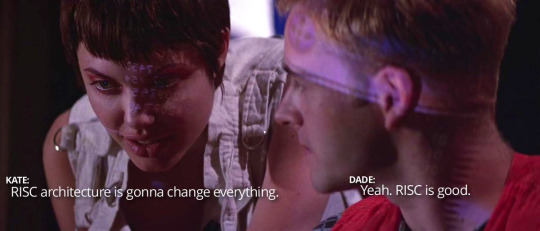
The P6 microarchitecture comes out swinging with like four or five tricks to get around the numerous problems with x86 and deploys them all at once. It has superscalar pipelining, it has a RISC microcode, it has branch prediction, it has a bunch of zany mathematical optimizations, none of these are new per se but this is the first time you're really seeing them all at once on a chip that was going into PC's.
Without these improvements it's possible Intel would have been beaten out by one of its competitors, maybe Power or SPARC or whatever you call the thing that runs on the Motorola 68k. Hell even MIPS could have beaten the ageing cancerous mistake that was x86. But by discovering the power of lying to the computer, Intel managed to speed up x86 by implementing it in a sensible instruction set in the background, allowing them to do all the same clever pipelining and optimization that was happening with RISC without having to give up their stranglehold on the desktop market. Without the P5 we live in a very, very different world from a computer hardware perspective.
From this falls many of the bizzare microcode execution bugs that plague modern computers, because when you're doing your optimization on the fly in chip with a second, smaller unix hidden inside your processor eventually you're not going to be cryptographically secure.
RISC is very clearly better for, most things. You can find papers stating this as far back as the 70's, when they start doing pipelining for the first time and are like "you know pipelining is a lot easier if you have a few small instructions instead of ten thousand massive ones.
x86 only persists to this day because Intel cemented their lead and they happened to use x86. True RISC cuts out the middleman of hyperoptimizing microcode on the chip, but if you can't do that because you've girlbossed too close to the sun as Intel had in the late 80's you have to do something.
The Future
This gets us to like the year 2000. I have more chips I find interesting or cool, although from here it's mostly microcontrollers in part because from here it gets pretty monotonous because Intel basically wins for a while. I might pick that up later. Also if this post gets any longer it'll be annoying to scroll past. Here is a sample from a post I have in my drafts since May:

I have some notes on the weirdo PowerPC stuff that shows up here it's mostly interesting because of where it goes, not what it is. A lot of it ends up in games consoles. Some of it goes into mainframes. There is some of it in space. Really got around, PowerPC did.
237 notes
·
View notes